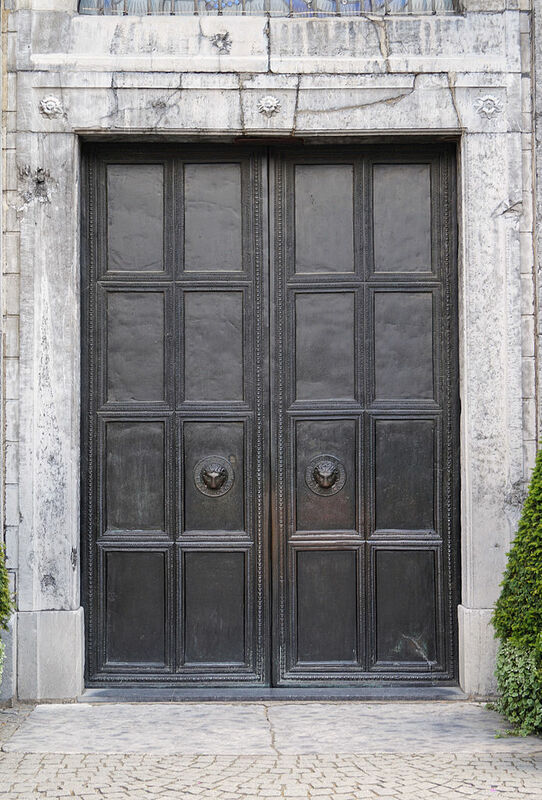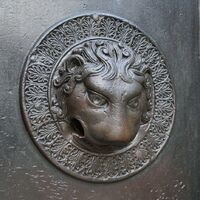Bronze works in Aachen
Type:
Doors,
Sculptures
Date:
Early ninth century
Location or Findspot (Modern-Day Country):
Germany
Medium:
Bronze
Description:
The ancient method of casting bronzes in the lost-wax technique was revived in ninth-century Aachen after a foundry was set up in the late eighth century. Visitors to Charlemagne's palace chapel could see a combination of imported bronze works and new creations, among them bronze railings, bronze doors with lion-head knockers, and the bronze sculptures of a she-bear and pinecone. These last two, in particular, would have helped to elevate the status of Aachen by reminding visitors of other monumental bronze sculptures: the she-wolf nourishing the founders of ancient Rome and the monumental pinecone that adorned a fountain at the Lateran complex. The octagonal plan of the chapel at Aachen was itself a reference to the Lateran Baptistery in Rome, and so sculpture and architecture worked together to create multiple links to the past. It is not clear if the pinecone was made at Aachen or brought from Rome, but in either case it was set on a Carolingian base and helped elevate the status of Charlemagne's new capital as the new Rome.
Relevant Textbook Chapter(s):
5
Image Credits:
Wikimedia Commons




